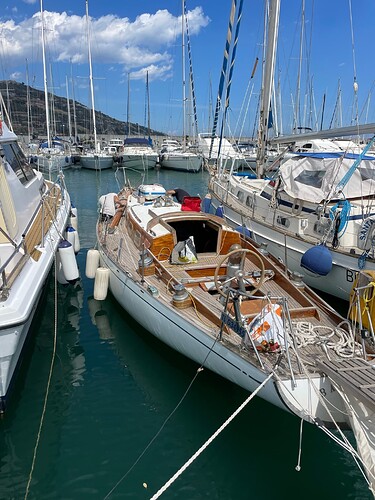Dear Istvan,
I‘d like to draw your attention to a design use case involving 3D scanning and Shapr3D.
We are restoring a classical sailboat (Sparkman & Stephens sloop, built in France in 1967). Work happens at different locations in Austria, Italy, France and the USA. New components are designed into existing structures. To enable an efficient workflow precision and communication (with good visuals) is key. Therefore we add 3D scanning (3D Scanner App iPhone/iPad), 3d modelling (Shapr3D) and 3D printing (Zortrax printers) to usual workflows.
Integrating an autopilot into the cockpit of the sailboat we:
(1) scanned the cockpit (ARKit photogrammetry in 3D Scanner App),
(2) modelled the cockpit in Shapr3D using the original boat construction plans, step files from the autopilot manufacturer, actual measurements taken at the boat and STL from 3D Scanner App as a (visual) reference,
(3) completed the design as rendered results in Shapr3D,
(5) exported the autopilot mounting parts for printing with Zortrax printers at our workshop (ABS materials to withstand temperature and salt-water; when operationally proven the final structure will be wood manufactured on a CNC machine with hand finishing).
As you can see this process worked perfectly!
However we had to use CloudCompare (on the Mac) to combine the textured obj and (unfortunately) an untextured 3D export from Shapr3D in one view.
Being able to use textured OBJ instead of plain STL would improve the workflow - especially as a reference and for rendered visualisation (see photos/screenshot).
I would recommend adding textured 3D meshes to Shapr3D.
Best regards,
Dr. Raoul R. Schild
CEO, Schild & Partner GmbH
———








